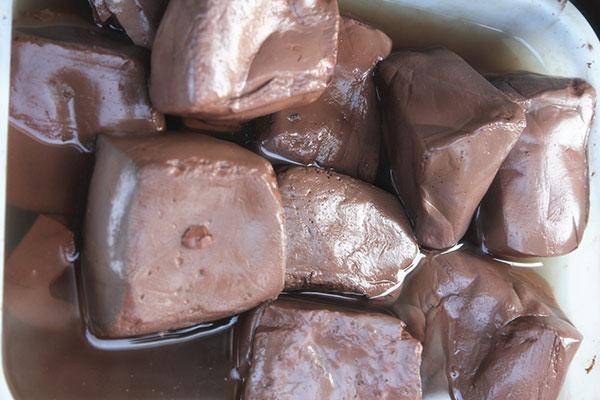In the past, when people experienced symptoms of dizziness, fatigue, paleness, palpitations, and shortness of breath due to anemia, or when women were menstruating, they would mostly consider brown sugar and red dates as the best blood-enriching foods. However, with the improvement of living standards and the abundance of material resources now, people who lack blood in their bodies are actually more willing to achieve blood supplementation by eating three types of food. Have you chosen the right ones?
The first type of food is duck blood.
There are many reasons for anemia or insufficient blood in the body, including abnormal hematopoietic cells, deficiency of hematopoietic substances such as iron and folic acid, acute and chronic blood loss, excessive destruction of red blood cells, but iron deficiency is still the most common factor. Therefore, the most important thing to do for blood supplementation is to first supplement iron.
Relatively speaking, brown sugar and red dates mainly consist of sugar, with a low iron content, so their blood-supplementing effect can be said to be minimal. Foods rich in iron are generally found in animal products, such as duck blood.
Duck blood is a common and nutritious food in daily life, rich in protein, carbohydrates, cholesterol, niacin, folic acid, retinol equivalents, carotene, vitamin A, vitamin B2, vitamin C, calcium, phosphorus, iron, sodium, and potassium. On average, about 22.6mg of iron is contained in every 100g of duck blood. When ingested, it is easily absorbed by the human body, thereby fulfilling its blood-enriching role.
It is important to note that iron-rich foods are generally recommended to be consumed persistently, rather than in large quantities at once. While supplementing blood, it is equally important to consume other foods to maintain a balanced diet.
The second type of food is pig liver.
Pig liver, also an animal product, is the liver of a pig. It can be described as one of the ideal blood-enriching foods, containing various nutrients needed by the human body such as protein, unsaturated fatty acids, carbohydrates, retinol equivalents, water, cholesterol, niacin, vitamin A, vitamin C, potassium, sodium, calcium, and phosphorus. On average, pig liver contains about 23g of iron per 100g and consuming it in moderation helps in blood supplementation and assists in correcting anemia.
However, it is also important to avoid excessive intake at once to prevent exceeding the recommended fat intake, as excess fat accumulation in the body can further impact health.
The third type of food is spinach.
Spinach is a green leafy vegetable containing a rich array of nutrients such as carbohydrates, protein, carotene, retinol equivalents, vitamin A, vitamin K, vitamin C, vitamin E, potassium, sodium, calcium, magnesium, and phosphorus. Although spinach contains only 2.9mg of iron per 100g, it also contains 32mg of vitamin C.
While consuming iron-rich foods, eating a moderate amount of foods rich in vitamin C can help the body better absorb iron, leading to a more effective result. Eating spinach can therefore improve iron absorption rate, so people looking to enrich their blood might consider consuming more spinach.
Furthermore, as the components in food are limited and food itself does not have the ability to treat diseases, it is not advisable to overly rely on diet alone. In cases of severe anemia, it is recommended to consider medication under medical guidance.
During specialized treatment, it is important to follow medical advice, rest in bed more, avoid strenuous exercise, refrain from self-medicating to prevent inhibiting iron absorption or causing unnecessary side effects that could worsen the condition.


